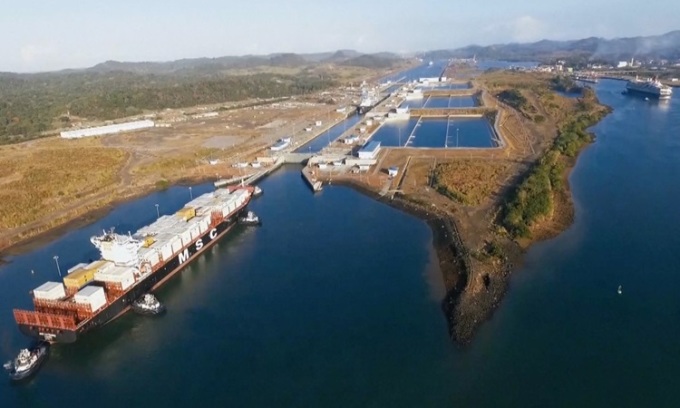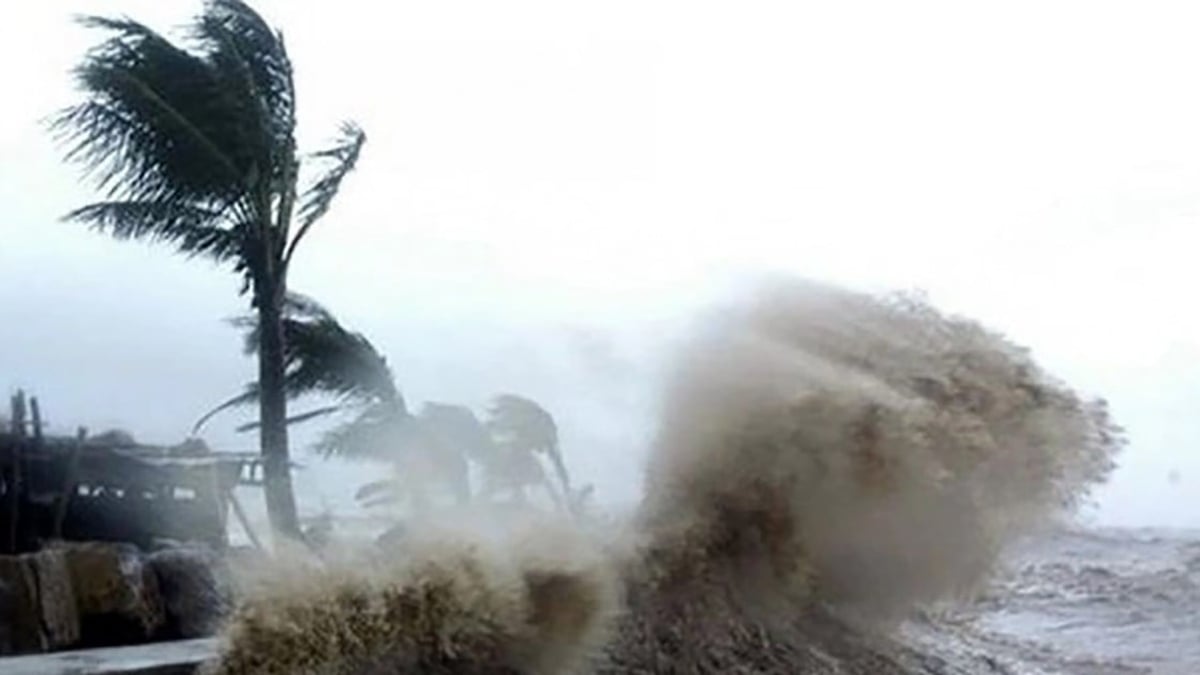Measures such as building reservoirs and creating artificial rain take a long time to implement while the Panama Canal is severely affected by drought.

The Panama Canal is experiencing its worst drought in 70 years. Photo: CGTN
A few hundred yards from the massive ships that ferry goods around the globe, the stumps of dead trees poke out of the water. They are all remnants of the forest that was flooded more than a century ago to create the canal. At the height of the dry season, it would not be unusual to see them. But now, after the monsoon, they should be completely submerged. It is visible evidence of the impact of the dry weather on a waterway that handles $270 billion in goods a year, according to Bloomberg .
The Panama Canal Authority (PCA) is considering potential solutions including building reservoirs to pump water into the canal and artificial rain to increase rainfall, but both options would take years to implement if they were feasible. With water levels 6 feet below normal, the canal authority has had to restrict the number of ships passing through. The restrictions imposed late last year were the strictest since 1989. Some shipping companies are paying millions of dollars to skip queues, while others are taking longer, more expensive routes around Africa or South America.
The restrictions have eased thanks to higher-than-expected rainfall in November 2023, but at 24 ships a day, the maximum is still well below the pre-drought capacity of 38. As the dry season approaches, conditions will worsen again. The state of the canal reflects the impact of climate change on global trade flows. Drought has created vulnerabilities on the Mississippi in the US and the Rhine in Europe. In the UK, rising sea levels have increased the risk of flooding along the Thames. Melting ice has created new waterways in the Arctic.
Under normal circumstances, the Panama Canal handles about 3% of global maritime trade and 46% of the containers that move from Northeast Asia to the East Coast of the United States. The canal is Panama’s biggest source of revenue, bringing in $4.3 billion in 2022. To allow 24 ships to pass through a day during the dry season, the canal releases water from Lake Alajuela, a secondary reservoir. If the rains begin in May, the canal could increase traffic, said Erick Córdoba, a water manager at the PCA. But that’s only a short-term solution. In the long term, the key solution to chronic water shortages is to dam the Indio River, then drill a tunnel through the mountains to divert fresh water 8 km (5 miles) into Gatún Lake, the canal’s main reservoir.
Along with other conservation measures, the project would cost about $2 billion, Córdoba estimated. He said it would take at least six years to build the dam. The U.S. Army Corps of Engineers is conducting a feasibility study. The Indio River Reservoir would increase the capacity of ships enough to maintain the canal while also providing fresh water to Panama City. The country would need to dam more rivers to ensure it has enough water by the end of the century. Moving forward, however, would be difficult, requiring congressional approval and the agreement of thousands of farmers and ranchers who oppose the plan because their land would be submerged.
Another potential solution is more experimental. In November 2023, a small plane operated by North Dakota-based Weather Modification Inc. flew to Panama to test rainmaking, a process that involves spraying large salt particles into clouds to encourage condensation and produce rain. But rainmaking has been successful mainly in dry weather, not in tropical countries like Panama.
Some shipping companies have expressed frustration with the PCA’s slow response to low water levels. “There are no major infrastructure projects underway in Panama to increase the supply of clean water,” said Jeremy Nixon, chief executive of Japanese container shipping company Ocean Network Express Holdings Ltd. (ONE).
Climate change combined with infrastructure expansion is to blame for the canal’s woes. The PCA completed a series of new locks to increase traffic and keep up with the growing size of cargo ships. What it didn’t do was build a new reservoir to pump in enough fresh water, and then drought struck. As of November, 2023 was the driest year on record for Barro Colorado Island in Gatun Lake, according to Steve Paton, director of the Nature Watch program at the Smithsonian Tropical Research Institute.
Global warming is exacerbating the effects of El Niño, bringing dry conditions to Panama that are expected to last until at least March in the Northern Hemisphere. Gatún Lake is draining faster during the dry season, and rising temperatures are accelerating evaporation. In 2023, the trade winds were unusually weak, contributing to record-high water temperatures along Panama’s Pacific and Atlantic coasts. The weak winds also meant that rain clouds could not reach Gatún. Rain fell on Panama City for several days while the lake received very little.
The crisis has disrupted the existing waterway for more than a century. When it opened in 1914, the canal offered an alternative to the Suez Canal, the Cape of Good Hope and the Strait of Magellan for shipping between the northern and southern hemispheres. Now shipping companies are turning to all three to avoid the Panama bottleneck.
While the Suez Canal is a sea-level canal, the Panama Canal is a freshwater canal that relies on an artificial lake, making it vulnerable to drought. Jorge Luis Quijano, a consultant and former director of the PCA, said it could take a year for the lake to return to its normal flow. Quijano said he noticed the problem a decade ago, when he oversaw the construction of a series of new locks to accommodate larger ships through the canal. The locks are engineering marvels but also consume a lot of water.
Seawater mixes with freshwater when the lock is in operation. To prevent the country’s largest navigable water source, Lake Gatún, from becoming salty, the canal releases enough lake water to fill 76 Olympic swimming pools per ship. The vast basin returns some of the water to the lake, but because the process increases salinity, it is of limited use. Before the end of his term, Quijano called on the government to begin building more reservoirs, but without success.
An Khang (According to Bloomberg )
Source link








![[Video] More than 100 universities announce tuition fees for the 2025–2026 academic year](https://vphoto.vietnam.vn/thumb/1200x675/vietnam/resource/IMAGE/2025/7/18/7eacdc721552429494cf919b3a65b42e)





















































































![[Infographic] In 2025, 47 products will achieve national OCOP](https://vphoto.vietnam.vn/thumb/402x226/vietnam/resource/IMAGE/2025/7/16/5d672398b0744db3ab920e05db8e5b7d)





Comment (0)